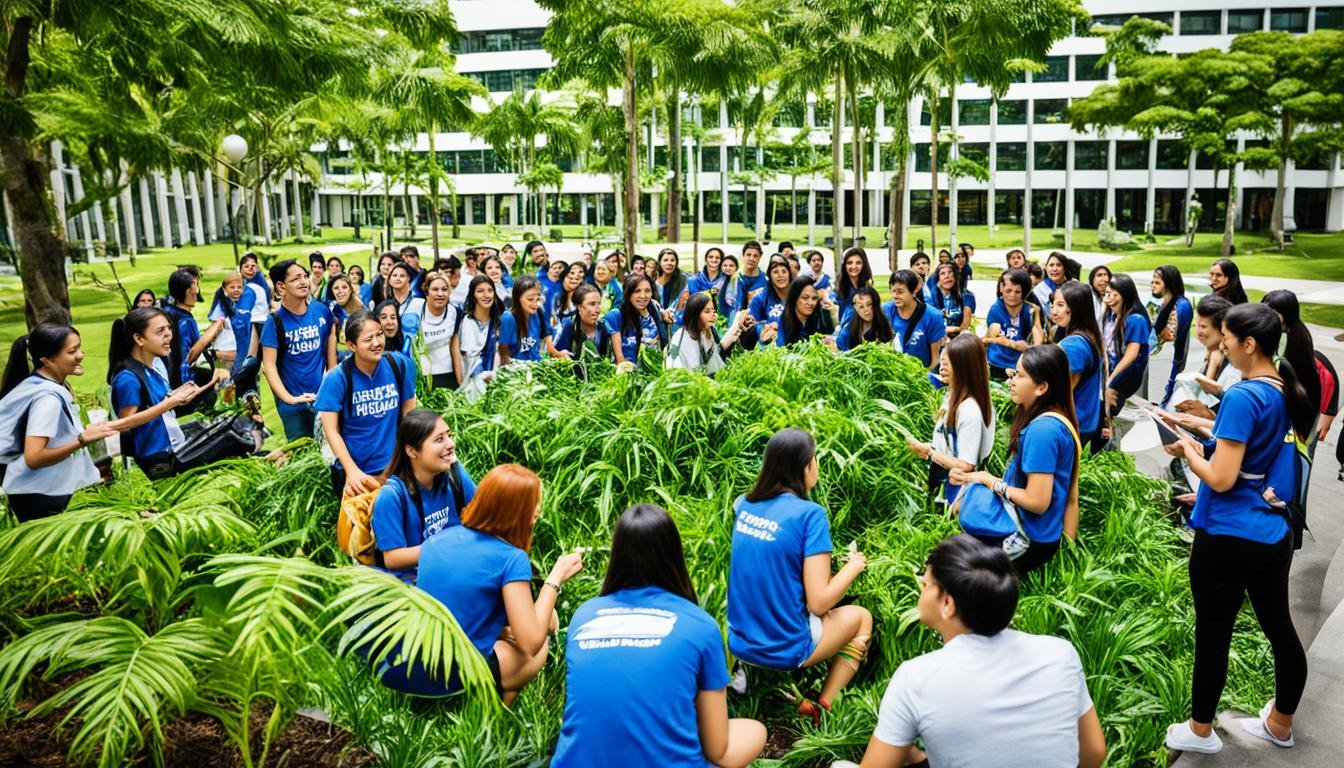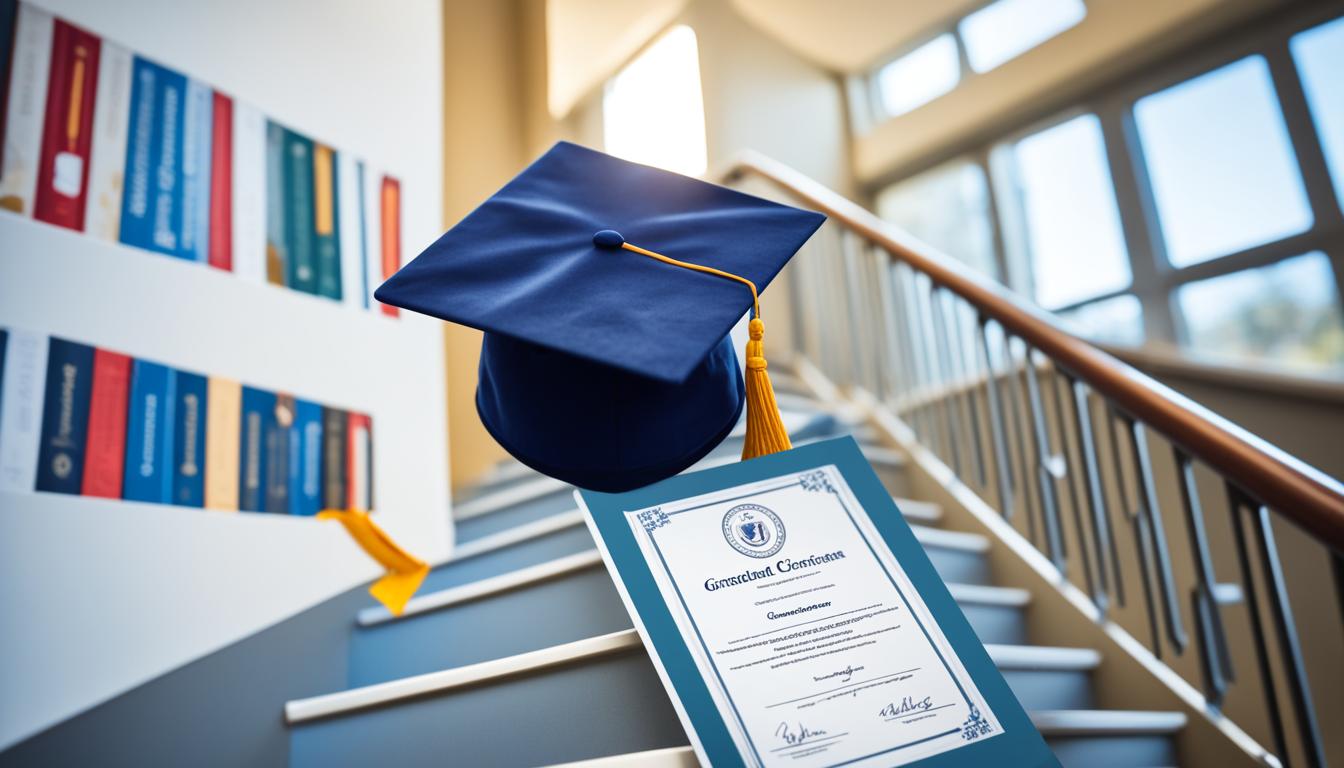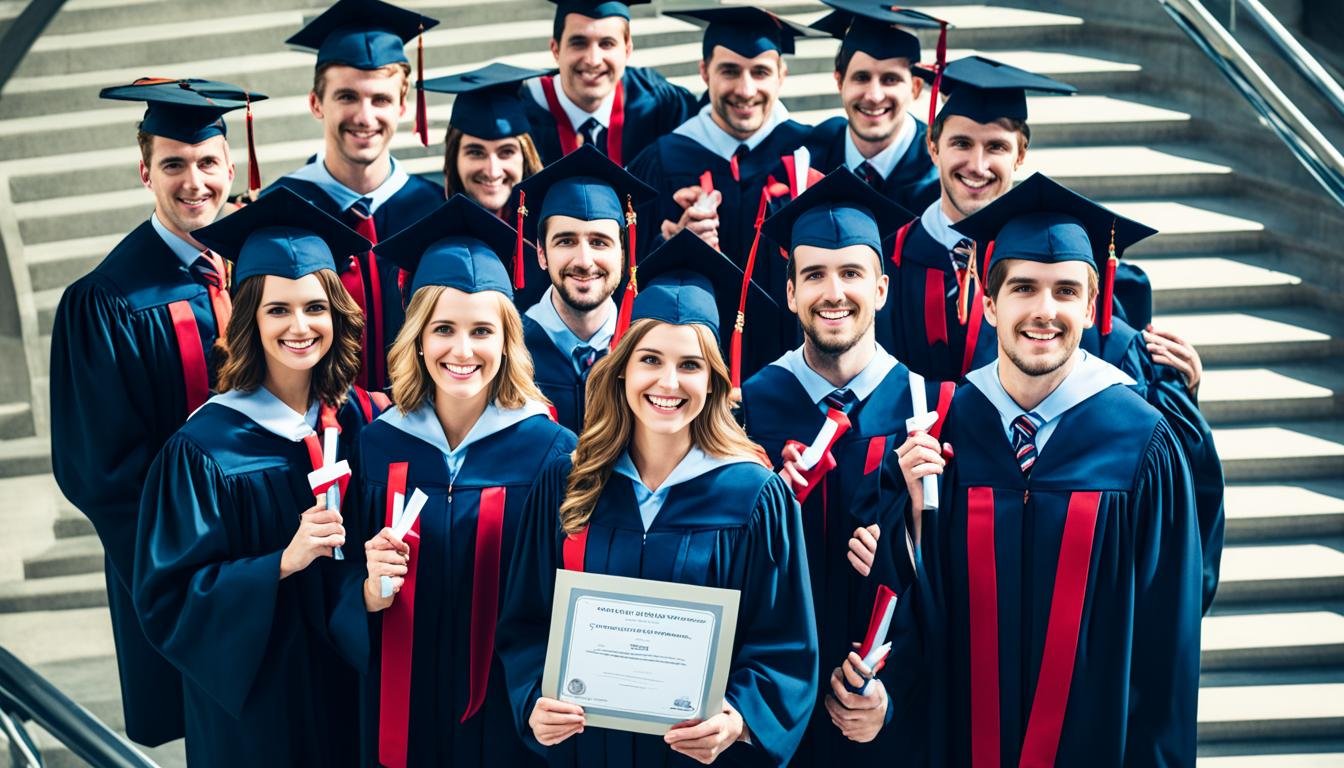Did you know that the Philippine academic landscape is undergoing significant transformations to meet the challenges posed by the pandemic and the ever-evolving needs of the workforce?
In response to the rapidly changing educational landscape, universities in the country are adopting blended learning approaches and focusing on developing students’ skills for the future. The implementation of online synchronous and asynchronous learning methods has become crucial for the quick and effective delivery of education.
However, as with any major transition, there are challenges to consider. Digital access issues persist for students in remote provinces, highlighting the need for equitable access to education. Moreover, there is an increasing emphasis on the importance of soft skills and lifelong learning to ensure graduates are well-prepared for the demands of the workforce.
In this article, we will explore the Philippine academic landscape, its journey towards achieving success, and the strategies being implemented to overcome challenges and embrace the opportunities brought about by this transformative period.
Key Takeaways:
- Universities in the Philippines are adopting blended learning approaches to meet the challenges posed by the pandemic and the changing needs of the workforce.
- Online synchronous and asynchronous learning methods play a crucial role in the delivery of education.
- Digital access issues for students in remote provinces need to be addressed to ensure equitable access to education.
- Soft skills and lifelong learning are being emphasized to prepare graduates for the demands of the workforce.
- The government of the Philippines has recognized the importance of online education and has taken steps to support its implementation.
Adapting to Blended Learning
As the educational landscape in the Philippines undergoes significant transformations, universities are embracing blended learning to meet the changing needs of students. Blended learning combines online and in-person instruction, providing greater flexibility and increased efficiency in education delivery.
Through the use of online synchronous and asynchronous learning methods, universities can quickly and effectively deliver educational content. By utilizing digital platforms, students have the ability to access resources from anywhere, maximizing their learning experience.
As universities adapt to the rapidly changing world of work, the focus is now on implementing skills training that aligns with industry demands. Blended learning allows for the integration of online learning and skills development, preparing students for the challenges and opportunities of the workforce.
Challenges and Drawbacks
While blended learning offers various advantages, such as flexibility and efficiency, there are certain challenges and drawbacks that need to be considered.
- Academic Policies: One of the drawbacks of the focus on blended learning is that it has sometimes overshadowed discussions about important academic policies. Areas such as attendance monitoring, teacher training, and faculty evaluation have not received the necessary attention. In order to ensure the smooth and efficient implementation of blended learning, it is crucial to address the preparedness of academic policies and make any necessary adjustments.
- Digital Access: Another challenge that arises with blended learning is the issue of digital access. Students in remote provinces often face difficulties in accessing reliable internet connectivity and necessary digital resources. This creates a digital divide and hampers equitable access to education. Efforts should be made to bridge this gap and provide all students, regardless of their geographical location, with equal opportunities for learning.
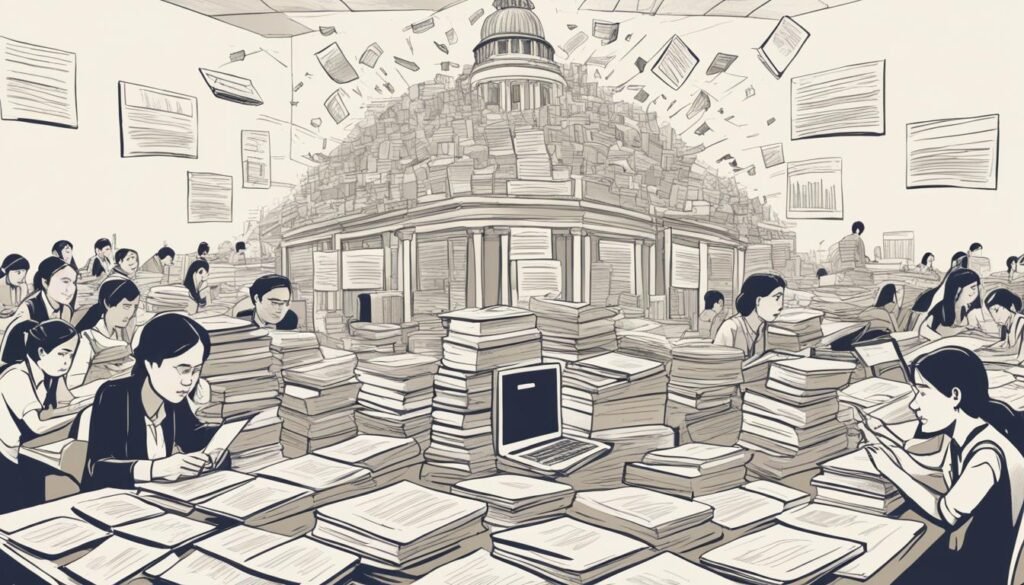
Addressing these challenges and drawbacks will contribute to the effective implementation and success of blended learning in the Philippine academic landscape.
Preparing Graduates for the Workforce
Universities in the Philippines are committed to equipping graduates with the necessary skills and knowledge to thrive in the ever-changing workforce. Recognizing the high demand for digital skills in emerging industries, institutions are placing a growing emphasis on developing these capabilities among students. From proficiency in programming languages to data analysis and digital marketing, the acquisition of digital skills has become an essential component of workforce preparation.
However, feedback from companies suggests that many graduates lack the necessary digital competencies required for today’s job market. To bridge this gap, universities are incorporating career services and enhancing their curricula to integrate skills development. By infusing digital training throughout various academic programs, students can gain practical knowledge and hands-on experience in utilizing digital tools and technologies.
Aside from digital skills, the importance of soft skills cannot be overlooked. Effective communication, critical thinking, collaboration, and adaptability are crucial attributes that contribute to workplace success. Employers value candidates who can effectively work in teams, solve complex problems, and think critically to drive innovation.
Universities are proactively equipping students with these soft skills through various initiatives, such as workshops, group projects, and leadership development programs. By fostering these essential qualities, graduates can navigate the workplace with confidence and contribute positively to their teams.
Preparing graduates for the workforce requires a holistic approach that combines the development of both digital skills and soft skills. By aligning education with the needs of the job market, universities in the Philippines are empowering their students to achieve success in their chosen careers.
Government Support for Online Education
The government of the Philippines recognizes the significance of online education, especially in the wake of the COVID-19 pandemic. To cater to the changing educational needs of students and teachers, the Commission on Higher Education (CHED) has established a dedicated office to oversee the implementation of online learning and distance education in higher education institutions (HEIs) nationwide.
The government’s support extends beyond higher education. It has also approved the Public Schools of the Future in Technology (PSOFT) Act, which aims to digitize public school education over the next five to ten years. This act demonstrates the government’s commitment to promoting online education and leveraging technology to enhance the learning experience for K-12 students.

Through these initiatives, the government is paving the way for a more inclusive and accessible education system in the Philippines. By embracing online education, the government aims to provide opportunities for students to continue their education uninterrupted, irrespective of geographical barriers. The focus is on leveraging technology to ensure that quality education is accessible to all, regardless of their location or socio-economic background.
Moreover, the government’s support for online education aligns with the broader goal of developing a digitally competent and globally competitive workforce. As the demand for digital skills increases in an ever-evolving job market, online education becomes a crucial tool for equipping students with the necessary knowledge and skills to thrive in the digital age.
In addition to government support, the Philippines also has a thriving edtech ecosystem. Edtech players are partnering with educational institutions to provide innovative solutions and platforms that facilitate online learning and enhance the overall educational experience. These collaborations between the government, educational institutions, and edtech players are instrumental in driving the digital transformation of education in the country.
By recognizing the value of online education, supporting its implementation, and fostering partnerships with edtech players, the government of the Philippines is laying the foundation for a resilient and future-ready education system. This commitment to online education and digitalization of learning will contribute to the overall success and growth of the Philippine academic landscape.
Overcoming Infrastructure Challenges
Transitioning to online education presents infrastructure challenges for Filipino students. While mobile phones and internet access are widespread, there is a need for affordable and reliable internet connectivity to support online learning effectively.
Educational technology, such as Learning Management Systems (LMS), can help bridge the accessibility gaps in online education. LMS provides a platform for self-paced learning and collaboration, making it easier for students to access educational resources and engage with their coursework.
To ensure accessibility from the start, LMS infrastructure should be designed to work seamlessly on various devices without the need for expensive hardware or separate mobile apps.
Image:
Partnership Opportunities for EdTech Vendors
The digitalization of education in the Philippines presents lucrative partnership opportunities for edtech vendors. As the country embraces technology to enhance learning, there is a growing demand for innovative solutions and platforms to support educational institutions.
One notable player in the Philippines’ edtech landscape is D2L, which has already made its mark by partnering with local key players in information and communications technology (ICT) and telecommunications. These partnerships aim to improve visibility and accessibility, ensuring that students and educators have access to high-quality digital education resources.
Local government bodies are also embracing digitalization. The City Government of Taguig and the Department of Education Division of Taguig and Pateros are among the early adopters, partnering with edtech vendors to digitize public school education. This collaboration paves the way for comprehensive educational services and improved learning outcomes.
Educational institutions at all levels are recognizing the benefits of partnering with edtech vendors. For example, the De La Salle-College of St. Benilde has embraced edtech platforms to enhance the learning experiences of its students.
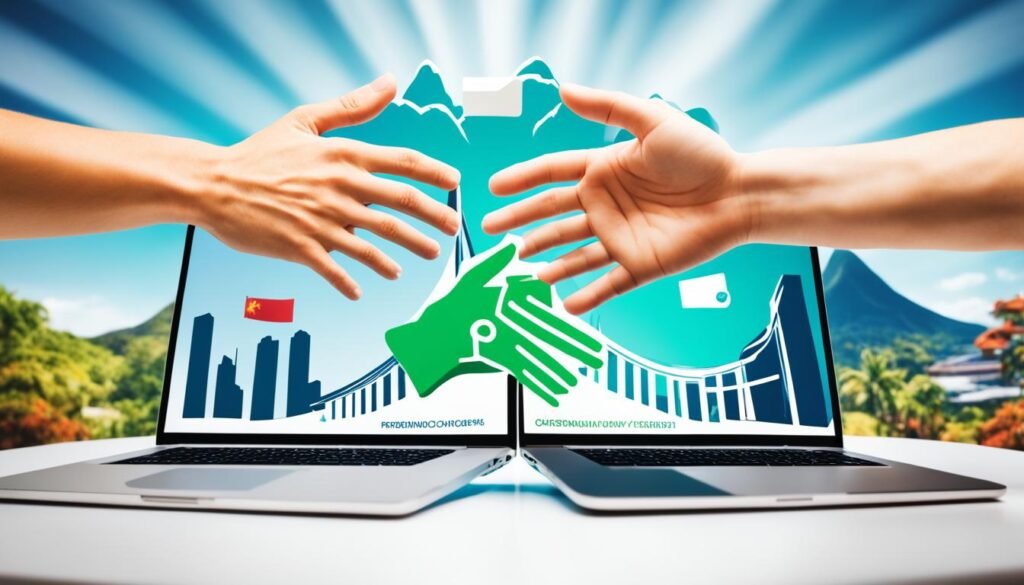
These partnerships create a synergistic environment where edtech vendors can contribute their expertise in digital education while educational institutions gain access to cutting-edge resources and technologies.
By collaborating with the Philippines’ edtech ecosystem, vendors can not only expand their market reach but also contribute to the advancement of digital education in the country. The digitalization of education is an ongoing process, and partnerships with edtech vendors are instrumental in driving this transformation.
Evolution of the Philippine Education System
The Philippine education system has undergone significant transformations throughout history, shaped by colonial occupation and socio-political changes. It has constantly adapted to meet the evolving needs of the country and its people.
Today, the Philippine education system is focused on expanding access to quality education and reducing poverty. One notable reform that took place in 2016 is the K-12 program, which extended the compulsory schooling period and introduced new elements to the curriculum. This reform aimed to align the education system with international standards and enhance the skills and competencies of Filipino students.
With the implementation of the K-12 reform, the government has also made commitments to increased funding for education and improving resource allocation efficiency. These efforts are essential in addressing the deep inequalities that still persist within the system and ensuring that every Filipino student has equal access to quality education.
Despite the progress made, there are challenges that need to be overcome. Deep-rooted inequalities, both in terms of access and quality of education, remain a concern. Ongoing efforts are required to address these issues effectively and ensure that all students, regardless of their background, receive a well-rounded education.
The evolution of the Philippine education system is an ongoing journey towards providing equitable and inclusive education for all. It requires continuous commitment, investment, and innovation to address the changing needs of the workforce and equip students with the skills they need to succeed in the 21st century.
The Shift to K-12
The K-12 reform is a significant change to the Philippine education system, extending compulsory schooling to grades 11 and 12 and introducing new tracks for senior high school students. This reform marks a crucial milestone in preparing students for the demands of the 21st-century workforce.
Initially met with skepticism, concerns about the readiness of teachers and schools to implement the changes have been addressed through increased funding for basic education and a commitment to investing in human capital. These efforts have paved the way for the successful implementation of the K-12 reform.
The government’s 10-point plan for education focuses on expanding access to pre-schooling, technical-vocational training, and private school partnerships. By enhancing the curriculum and offering a diverse range of educational tracks, the K-12 reform equips students with the necessary skills and knowledge to pursue their chosen career paths.
The extended schooling period allows students to explore different fields of study, hone their talents, and make informed decisions about their future academic pursuits. This comprehensive and well-rounded approach to education empowers students to thrive in a competitive global environment.
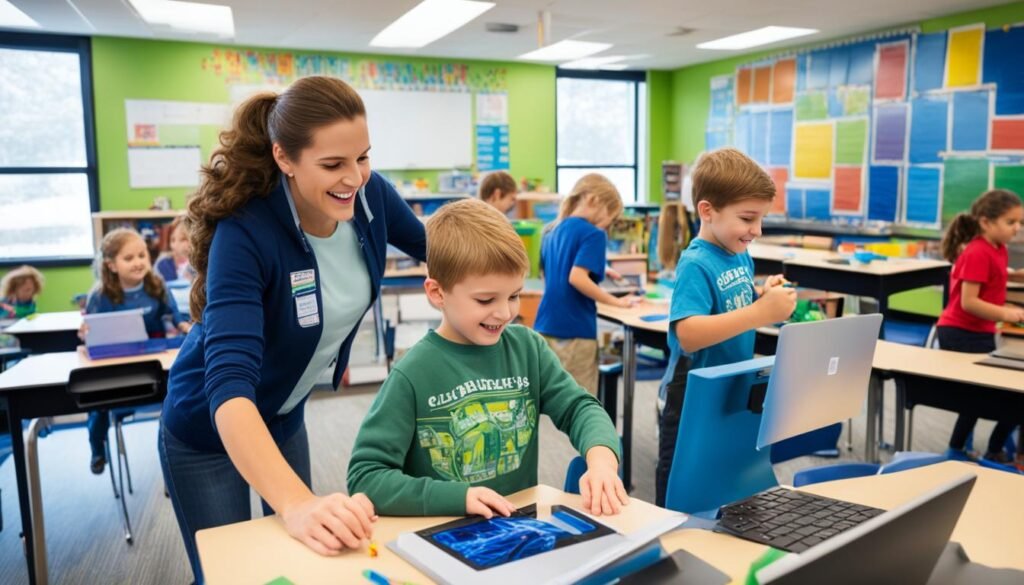
Education for All Initiative
The Education for All (EFA) initiative in the Philippines aims to ensure that all Filipinos have access to functional literacy and complete a full cycle of basic schooling. The government is committed to eliminating barriers to education, providing opportunities for out-of-school adults and young people. Through increased spending on education and implementing reforms such as school-based management and quality assurance measures, the government strives to improve education outcomes for all.
However, despite these efforts, the country still lags behind its neighbors in terms of education spending. To bridge this gap, it is crucial to prioritize access to education and allocate sufficient resources to meet the needs of all learners.
The Education for All initiative recognizes that education is a fundamental right and a key driver of individual and societal development. By ensuring functional literacy and access to education, the government aims to empower Filipinos to pursue their dreams, contribute to the country’s growth, and improve their quality of life.
Investing in Education
The Philippine government recognizes the critical role of education in driving economic growth and reducing poverty. In recent years, there has been an increase in public spending on education, resulting in improvements in infrastructure and teacher-student ratios. However, compared to neighboring countries, the country still allocates less funding to education.
To meet national education norms and standards, increased spending is essential. The World Bank has conducted assessments on education spending in the country and emphasized the need for continued investment to achieve better educational outcomes.
By prioritizing education funding, the government can ensure that students have access to quality resources, facilities, and teachers. Increased spending will also allow for the implementation of innovative teaching methods and the development of updated curriculum that aligns with the needs of the 21st-century workforce.
Recognizing Achievements and Challenges
The Philippines has made remarkable achievements in expanding access to education and implementing key reforms like the K-12 program. The government’s unwavering commitment to providing quality education for all Filipinos is commendable and has paved the way for significant progress.
However, challenges still exist that need to be addressed in order to ensure equitable access to quality education. Deep inequalities in educational opportunities and limited resources hinder the full realization of the education system’s potential. It is crucial to allocate more funding to education and prioritize spending on initiatives that directly enhance the quality of education.
In order to achieve success in providing quality education, ongoing assessment and evaluation of education policies and programs are vital. By continuously monitoring and improving the Philippine academic landscape, the education system can better cater to the evolving needs of students and the workforce.
Figure 12: Investing in education is crucial for achieving quality and accessible education for all Filipinos.
Future Outlook for Philippine Education
The future outlook for the Philippine education system is promising, with ongoing efforts to address challenges and continuously improve the quality of education. The government is focusing on digitalization and forming partnerships with edtech vendors to enhance access to education and promote innovation in the sector. Through these initiatives, the Philippines aims to nurture a highly skilled and adaptable workforce that can compete globally.
One key aspect of the future outlook is the emphasis on digitalization. The government recognizes the importance of integrating technology into the education system to enhance learning experiences and prepare students for the digital age. By leveraging digital tools and platforms, students will have access to a wealth of educational resources and interactive learning experiences that cater to their individual needs.
Another crucial component of the future outlook is the continuous investment in infrastructure, teacher training, and curriculum development. By improving infrastructure, students across the country will have equal access to quality education. Additionally, investing in teacher training programs will equip educators with the necessary skills to deliver effective and engaging instruction in a digital learning environment. Curriculum development will also play a vital role in ensuring that graduates possess the skills and knowledge required to succeed in the modern workforce.
The Pursuit of Global Competitiveness
The future outlook for Philippine education also centers around enhancing global competitiveness. As the world becomes increasingly interconnected, the ability to compete on a global scale is vital for the country’s economic growth and development. To achieve this, Philippine schools and universities will need to prioritize the development of skills that are in high demand in the international job market. This includes not only technical skills, but also essential soft skills such as critical thinking, problem-solving, and communication.
By fostering a culture of continuous improvement and innovation, the Philippine education system can position itself as a leader in the region and beyond. Through strategic collaborations with international partners and exposure to global best practices, Filipino students will be prepared to take on the challenges and opportunities of the rapidly changing world of work.
In conclusion, the future of Philippine education holds tremendous potential. With a focus on digitalization, continuous improvement, and global competitiveness, the country is poised to provide quality education that equips students with the skills and knowledge needed to thrive in the 21st century. By staying committed to these goals and adapting to the evolving needs of learners, the Philippine education system can achieve success and contribute to the country’s overall development.
Conclusion
The Philippine academic landscape is at a crucial juncture, undergoing significant transformations to adapt to the challenges posed by the pandemic and the evolving needs of the workforce. Blended learning approaches, digital skills development, and partnerships with edtech vendors are shaping the future of education in the country, promising a more accessible and efficient learning environment.
Although there are challenges and inequities to overcome, the commitment to providing quality education for all Filipinos remains strong. By investing in infrastructure, teacher training, and curriculum development, the Philippines can achieve success in its quest to provide affordable and accessible tertiary education. This will not only equip students with the necessary knowledge and skills but also empower them to navigate the rapidly changing world of work.
The journey towards achieving success in the Philippine academic landscape requires collaborative efforts from all stakeholders. From government support and funding to the dedication of educators, the commitment to continuous improvement and innovation is crucial. Moreover, fostering partnerships with edtech vendors and leveraging technological advancements will enhance the accessibility of education and nurture a highly skilled and adaptable workforce.
As the Philippines forges ahead, it must remain steadfast in its pursuit of quality education and prioritize the development of its students. By embracing the transformations taking place and addressing the challenges head-on, the Philippine academic landscape has the potential to thrive and prepare students for a future that demands constant growth and adaptability.
FAQ
Q: What is blended learning?
A: Blended learning combines online and in-person instruction to provide greater flexibility and efficiency in education delivery.
Q: How are online synchronous and asynchronous learning methods used?
A: Online synchronous and asynchronous learning methods are used to deliver educational content quickly and effectively through online platforms.
Q: What are the benefits of online learning?
A: Online learning allows students to access educational resources from anywhere, providing greater convenience and flexibility.
Q: What are the challenges of implementing blended learning?
A: Challenges include addressing academic policies, such as attendance and faculty evaluation, and ensuring equitable digital access for students in remote provinces.
Q: What skills are universities focusing on for workforce preparation?
A: Universities are focusing on developing digital skills and soft skills, such as communication and critical thinking, to prepare graduates for the evolving demands of the workforce.
Q: How is the government supporting online education?
A: The government has established a dedicated office to oversee the implementation of online learning and has approved the Public Schools of the Future in Technology (PSOFT) Act to digitize public school education.
Q: What are the infrastructure challenges in transitioning to online education?
A: The lack of affordable and reliable internet connectivity is a key infrastructure challenge that needs to be addressed to ensure equitable access to online education.
Q: What opportunities exist for edtech vendors in the Philippines?
A: Edtech vendors can support the digitalization of education in the Philippines by partnering with local key players in information and communications technology (ICT) and telecommunications.
Q: How has the Philippine education system evolved?
A: The Philippine education system has undergone changes over centuries of colonial occupation and socio-political transitions, with a current focus on expanding access to quality education and reducing poverty.
Q: What is the K-12 reform in the Philippines?
A: The K-12 reform extends the compulsory schooling period, introduces new elements to the curriculum, and includes tracks for senior high school students.
Q: What is the Education for All initiative in the Philippines?
A: The Education for All initiative aims to ensure that all Filipinos have access to functional literacy and complete a full cycle of basic schooling.
Q: How is the Philippines investing in education?
A: The Philippines has increased public spending on education, improved infrastructure, and focused on teacher-student ratios. However, more funding is still needed to meet national education norms and standards.
Q: What are the achievements and challenges in the Philippine education system?
A: The Philippine education system has made progress in expanding access and implementing reforms, but challenges such as deep inequalities and limited resources remain.
Q: What is the future outlook for Philippine education?
A: The future outlook is promising with ongoing efforts to address challenges, enhance access to education through digitalization, and prepare graduates for the demands of the workforce.
Source Links
- https://digiconasia.net/newsletter/transforming-the-educational-landscape-in-the-philippines-one-lms-at-a-time
- https://www.timeshighereducation.com/hub/coursera/p/skills-education-central-student-success-philippines
- https://oxfordbusinessgroup.com/reports/philippines/2017-report/economy/a-thorough-examination-substantial-reform-has-brought-with-it-a-variety-of-challenges
